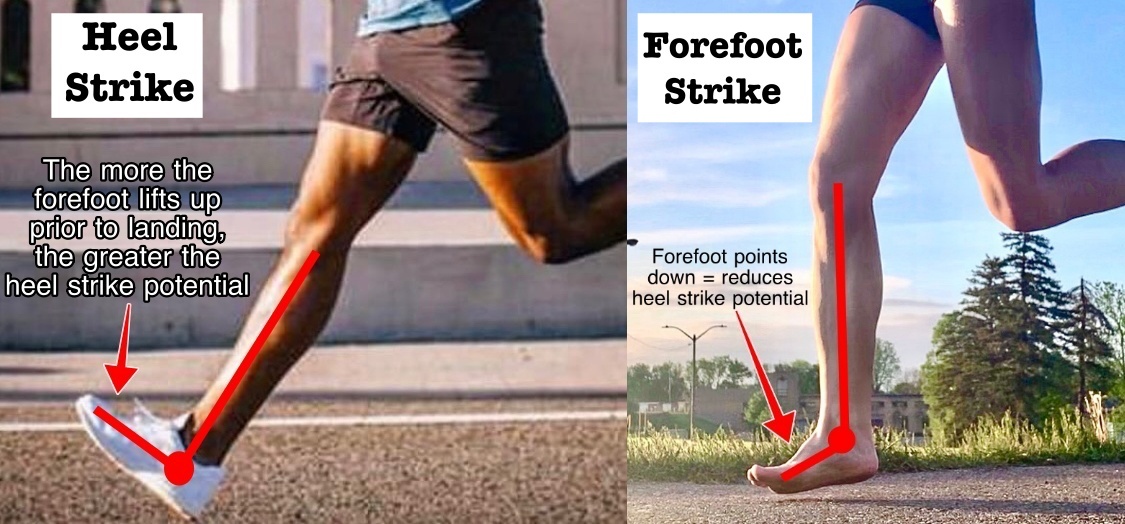Today’s runners wear shoes that cause our foot to over-reach too far ahead of the body and land heel-first when we run. When barefoot, we instinctively land away from the heel and strike the ground on the forefoot with a shorter stride.
Forefoot strike running (above right) has demonstrated an impressive track record of naturally providing more effective impact protection than heel strike running (above left) because in a proper forefoot strike the foot makes initial contact on the balls of the foot, which is not only the widest portion of the foot, allowing a larger contact area for better stability, the area also allows the entire foot to roll smoothly with the ground. This is because the front of the foot is made up of little small bones that allow the foot to articulate, or roll along the ground better, which prevents the jolty and rigid landings in a heel strike landing (above left). Read more here!

Bretta Riches
BSc Neurobiology; MSc Biomechanics candidate, ultra minimalist runner & founder of RunForefoot. I was a heel striker, always injured. I was inspired by the great Tirunesh Dibaba to try forefoot running. Now, I'm injury free. This is why I launched Run Forefoot, to advocate the health & performance benefits of forefoot running and to raise awareness on the dangers of heel striking, because the world needs to know.
Latest posts by Bretta Riches (see all)
- Can You Run In Barefoot Shoes? Yes, But DON’T Heel Strike! - 21/07/2024
- Why Cushioned Running Shoes Are Really Bad for Your Feet - 19/07/2024
- Do Cushioned Running Shoes Cause Injuries? - 17/07/2024

